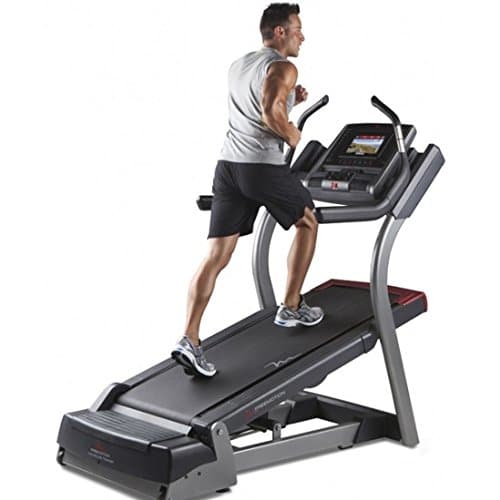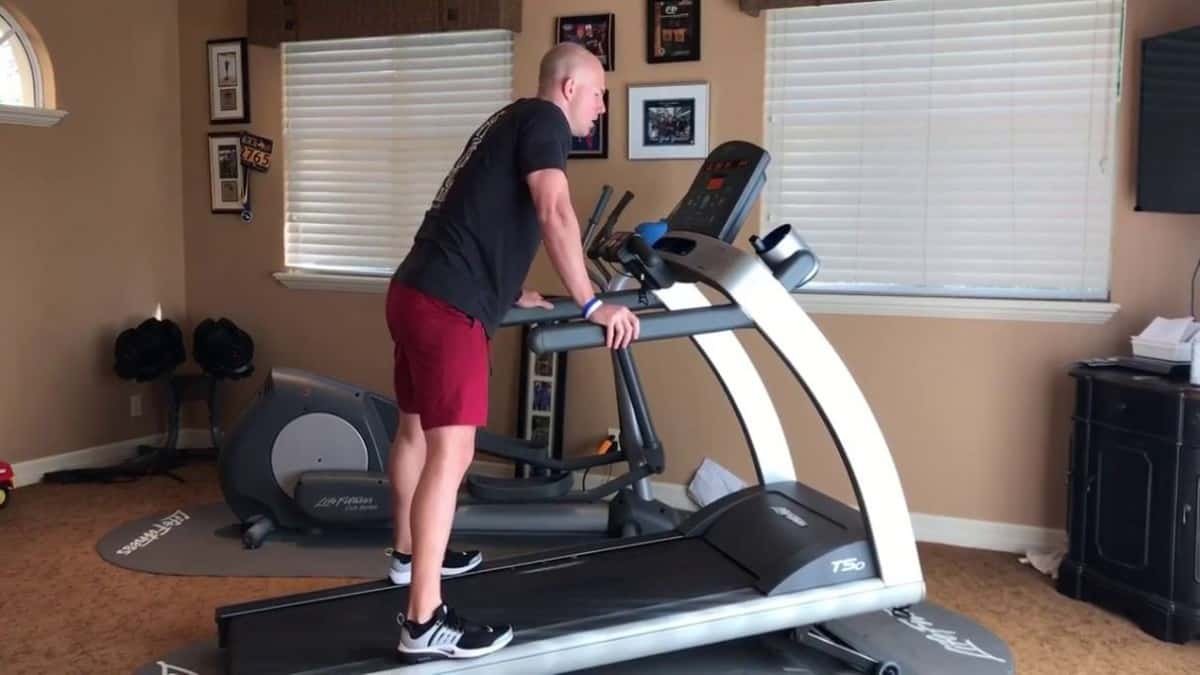Incline Treadmill Walking: A Comprehensive Overview
Incline treadmill walking has gained significant attention in recent years due to its numerous benefits and perks. This low-impact exercise offers a practical solution for individuals seeking to improve their cardiovascular health, burn calories, and tone muscles, all while minimizing the risk of injury. By adjusting the treadmill’s incline, users can simulate uphill walking, engaging various muscle groups and enhancing overall fitness.
The Science Behind Incline Treadmill Walking
Incline treadmill walking offers a multitude of benefits, primarily due to the unique physiological responses it elicits. By increasing the incline, users engage more muscle fibers, particularly in the lower body, leading to enhanced muscle activation and toning. This increased muscle engagement results in a higher caloric burn compared to traditional treadmill walking or outdoor strolling.
Furthermore, incline treadmill walking places greater demands on the cardiovascular system, as the body must work harder to pump blood and oxygen to the working muscles. This increased cardiovascular demand can lead to improvements in heart health, endurance, and overall fitness. Additionally, the controlled environment of a treadmill allows users to closely monitor and adjust their speed, incline, and intensity, ensuring a safe and effective workout tailored to their individual needs and goals.
How to Incorporate Incline Treadmill Walking into Your Fitness Routine
Incorporating incline treadmill walking into your existing fitness routine can be both enjoyable and rewarding. To get started, consider the following recommendations:
- Select a suitable treadmill: Opt for a high-quality treadmill with adjustable incline settings, such as models from ‘NordicTrack’ or ‘ProForm’.
- Begin gradually: Start with a comfortable incline, around 1-2%, and gradually increase as your fitness level improves.
- Determine frequency: Aim to include incline treadmill walking in your routine 2-3 times per week, allowing adequate recovery time between sessions.
- Monitor duration: Begin with shorter sessions, around 15-20 minutes, and progressively build up to 30-45 minutes or more, depending on your fitness goals and time constraints.
- Adjust intensity: Adjust your speed to maintain a challenging yet sustainable walking pace. Aim for a heart rate between 50-70% of your maximum heart rate for moderate-intensity exercise.
- Mix it up: Incorporate interval training, varying the incline and speed to keep your workouts interesting and challenging.
- Stay consistent: Consistency is key when it comes to reaping the benefits of incline treadmill walking. Aim to make it a regular part of your fitness routine.
Comparing Incline Treadmill Walking to Other Forms of Exercise
Incline treadmill walking offers several unique advantages compared to other popular forms of exercise. By understanding these differences, you can make informed decisions about incorporating incline treadmill walking into your well-rounded fitness plan.
Incline Treadmill Walking vs. Outdoor Walking
While both activities provide cardiovascular benefits, incline treadmill walking offers increased muscle activation and calorie burn due to the steeper incline. This makes it an excellent option for those seeking to tone muscles and achieve weight loss goals more efficiently.
Incline Treadmill Walking vs. Jogging
Jogging is a high-impact activity that can place additional stress on joints, whereas incline treadmill walking is low-impact and easier on the body. Incline treadmill walking can still provide a challenging cardiovascular workout, making it an attractive alternative for individuals with joint issues or those looking to reduce the risk of injury.
Incline Treadmill Walking vs. Stair Climbing
Stair climbing primarily targets the lower body, while incline treadmill walking engages both lower and upper body muscles due to the arm movement involved in walking. Incline treadmill walking can also be adjusted for intensity and duration, providing more flexibility and control over your workout.
Incline Treadmill Walking: A Solution for Specific Fitness Goals
Incline treadmill walking can be a valuable tool for achieving various fitness objectives. By tailoring your workouts to focus on specific goals, you can maximize the benefits of this versatile exercise method.
Weight Loss
Incline treadmill walking can help users burn more calories compared to walking on a flat surface, making it an effective weight loss solution. Aim for a challenging incline and speed, and incorporate interval training to further boost calorie burn and fat loss.
Muscle Toning
Walking at an incline engages more lower body muscles, such as the glutes, hamstrings, and calves, leading to improved muscle tone. To enhance muscle toning, consider incorporating resistance bands or increasing the incline to further challenge your muscles.
Improving Cardiovascular Health
Incline treadmill walking places greater demands on the cardiovascular system, which can lead to improvements in heart health and endurance. Gradually increase the incline and duration of your workouts to continue challenging your cardiovascular system and promote overall health.
Expert Opinions and Research Findings on Incline Treadmill Walking
Numerous experts and research studies have highlighted the benefits of incline treadmill walking. Here, we summarize some of the key findings and expert opinions to help you make informed decisions about incorporating this exercise method into your routine.
- A study published in the ‘Journal of Sports Sciences’ found that incline treadmill walking resulted in greater calorie burn and muscle activation compared to walking on a flat surface.
- According to a review in the ‘International Journal of Exercise Science’, incline treadmill walking can be an effective tool for improving cardiovascular health and endurance.
- Expert fitness trainer ‘Jessica Smith’ emphasizes the versatility of incline treadmill walking, stating that it can be tailored to meet various fitness goals, such as weight loss, muscle toning, and cardiovascular health.
While the benefits of incline treadmill walking are clear, it is essential to consider potential drawbacks. Some users may find the exercise to be monotonous or less engaging compared to outdoor activities. However, incorporating interval training, varying incline levels, and using resistance bands can help keep workouts interesting and challenging.
Real-Life Success Stories: Incline Treadmill Walking Transformations
Real-life success stories can be a powerful source of motivation and inspiration for individuals considering incorporating incline treadmill walking into their fitness routines. Here, we share a few anecdotes of individuals who have experienced significant benefits from this exercise method.
Sarah’s Weight Loss Journey
Sarah, a 35-year-old mother of two, turned to incline treadmill walking as a way to shed post-pregnancy weight. By walking at a 5% incline for 30 minutes, 4 times a week, she was able to lose 20 pounds in just three months. Sarah shares, “Incline treadmill walking helped me target my lower body and burn more calories compared to regular walking. It was a game-changer for my weight loss journey.”
John’s Cardiovascular Health Improvement
John, a 48-year-old businessman, decided to focus on his cardiovascular health after a routine check-up revealed high blood pressure. By walking at a 3% incline for 45 minutes, 5 times a week, John was able to lower his blood pressure and improve his overall cardiovascular fitness. He notes, “Incline treadmill walking not only helped me improve my health but also provided a convenient and time-efficient workout option during my busy schedule.”
Emily’s Muscle Toning Achievement
Emily, a 27-year-old fitness enthusiast, used incline treadmill walking to target and tone her lower body muscles. By incorporating resistance bands and walking at a 7% incline for 30 minutes, 3 times a week, Emily achieved noticeable muscle definition in her legs and glutes. She enthuses, “Incline treadmill walking added a new dimension to my fitness routine, and the results have been amazing!”
Maximizing Your Incline Treadmill Walking Experience: Tips and Tricks
To fully harness the benefits of incline treadmill walking, consider incorporating the following tips and tricks into your workout routine. These strategies will help you optimize your exercise experience and achieve your fitness goals more effectively.
Adjust the Incline
To reap the full benefits of incline treadmill walking, gradually increase the incline level during your workout. Aim for a 1-2% incline to start, then progress to higher inclines as your fitness level improves. This will help you target different muscle groups and enhance calorie burn.
Incorporate Interval Training
Interval training, which involves alternating between high-intensity and low-intensity intervals, can help boost your metabolism and improve cardiovascular fitness. For example, try walking at a 3% incline for 1 minute, followed by a 1-minute recovery period at a 0% incline. Repeat this pattern for the duration of your workout.
Use Resistance Bands
Incorporating resistance bands into your incline treadmill walking routine can help target and tone your upper body muscles. Attach resistance bands to the treadmill’s handrails or a secure anchor point and perform exercises such as bicep curls, shoulder presses, or lateral raises during your workout.
Stay Hydrated and Fueled
Proper hydration and nutrition are crucial for optimal performance and recovery. Ensure you drink plenty of water before, during, and after your workout. Additionally, consume a balanced meal containing carbohydrates, protein, and healthy fats within 60 minutes of your workout to aid in muscle recovery and growth.
Monitor Your Progress
Tracking your progress can help you stay motivated and accountable. Keep a workout log to record your incline levels, duration, and intensity. Regularly review your log to identify trends, set new goals, and celebrate your achievements.








